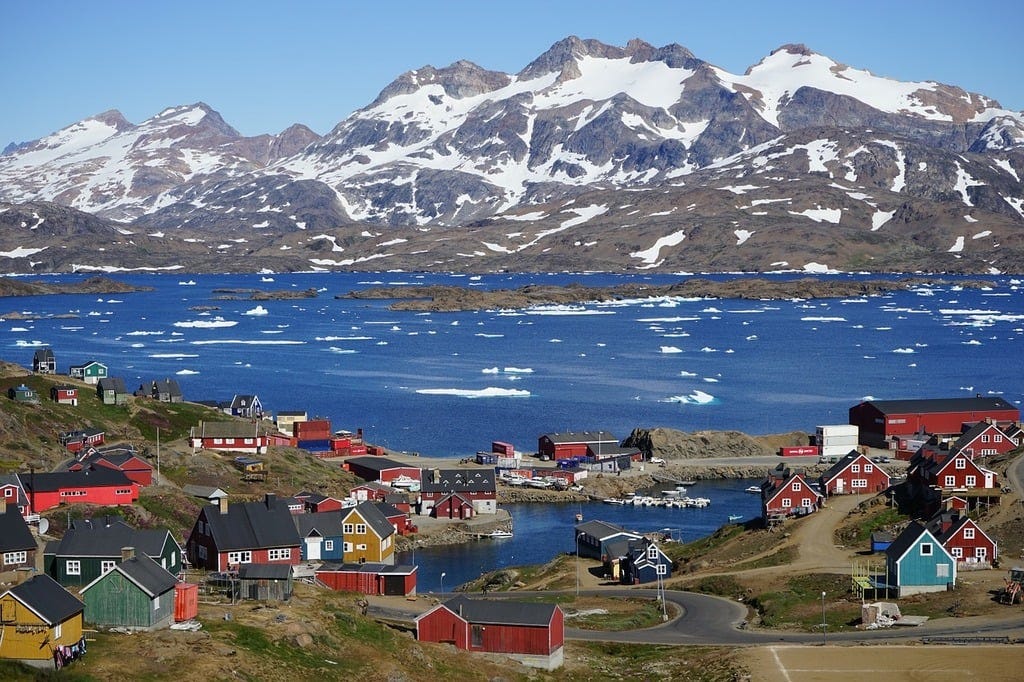In a widely covered news conference this week, President-elect Donald Trump reiterated his desire for the US to acquire Greenland, a semiautonomous territory of Denmark. At the same time, he also threatened to take back the Panama Canal – and refused to rule out using military force to do so.
Taken at face value, his statements seem almost patently absurd. The US has abided by international norms against seizing foreign territories for many decades. And to implicitly invoke force in acquiring territory from a close ally (Denmark) and a treaty partner (Panama) seems reckless at a minimum.
Putting all that aside (and it’s a lot!), what’s the fascination with Greenland? A few things, actually. First, Trump noted that the massive island is strategically important and relevant to US national security. It may be hard to envision that now, but melting ice is opening up the Artic in unprecedented ways and that will only continue with global warming. Arctic shipping has increased 37% over the last decade, and the US, Russia, and China are all eyeing the Northwest Passage and the Northern Sea Route, two shipping routes that connect the Atlantic and Pacific oceans and that pass along Greenland. Those routes could rewire international shipping. One of them, the Northern Sea Route, would mainly pass along the northern part of Russia.
Greenland is also expected to be home to valuable untapped mineral resources like iron ore, lead, gold, rare earth elements, uranium and oil. While only small portions of the island have been explored to date – mainly because most of it is covered by deep ice and glaciers – there is increasing mineral exploration and concession-making. Careful studies suggest that it is only a matter of time, and not too long a time at that, before large-scale mining takes place in Greenland. Greenland’s resources could help countries access minerals needed for the green transition.
As my forthcoming book Land Power (out next week!) argues, land is power – and Greenland is being viewed by global powers as an increasingly attractive play. With the world becoming more crowded, the planet warming, and resources dwindling, more land is going to become unproductive and uninhabitable. Places like Northeastern Brazil, the American Southwest, and the African Sahel are in the danger zone, and are already suffering long droughts and land degradation that will only worsen as the climate heats up. From that vantage point, Greenland appears as a golden opportunity. And unlike other territories well poised for the end of the century, like Canada or Siberia, Greenland’s status in the world order is far less settled.
Of course, all of this is rather irrelevant given that Greenland is not up for sale. Denmark has expressed no interest in entertaining an offer from the US. And in fact, Greenland’s leader has expressed a new desire for independence from Denmark since Trump’s statements.
The population of Greenland – around 60,000 people who are mostly Inuit – has a rather unsettling history with colonialism and doesn’t want it repeated. As part of a broader European trend in appropriating indigenous lands around the globe and seizing them for settlement or resource extraction, Denmark started colonizing Greenland in the 1700s. Along with efforts at cultural suppression, family separation, and forced urbanization, the Danish authorities also embarked on an effort at forced sterilization of Inuit women in the 1960s. The US engaged in many of the same practices with Native Americans during the country’s settlement and well into the 20th century.
But territory changing hands used to be far more common than it is in today’s world. Think of the US, with – just in the 1800s – acquisitions of the Louisiana Purchase, the annexation of the West and Southwest after the Mexican-American War, the purchase of Alaska from Russia, the annexation of Hawaii, and the annexation of Puerto Rico, Guam, and even the Philippines after the Spanish-American War.
It would be naïve to think that efforts to appropriate and exploit promising territories are off the table in the coming decades in a rapidly changing world. At the same time, if most demographic predictions come true, the global population is going to level out and then crater around the start of the next century. That will ease resource pressures and land scarcity. But in the meantime, the world should prepare for a new surge of competition over land and resources.
Notes: Leading image is of Tasiilaq, Greenland. From Pixabay (2016).
Map of the Arctic region showing the Northeast Passage, the Northern Sea Route and Northwest Passage is from Susie Harder, Public domain, via Wikimedia Commons.






Given that I am in the reason (from my White House meeting in July 2019 as CEO of Tanbreez Mining Greenland) for Trump's initial impulse, I think I've got some basis for suggesting the world chill out. The USA and Greenland can do great things together, with the USA "buying" Greenland. (In this video interview, I mistakenly say July 2020 instead of July 2019):
https://rumble.com/v67xtav-trump-guilty-verdict-la-fires-new-american-expansionism-and-cyber-truck-upd.html?start=4022
Can't even take care of the land we already have.
Disasters increase in the USA
And Trump is bickering on social media ?